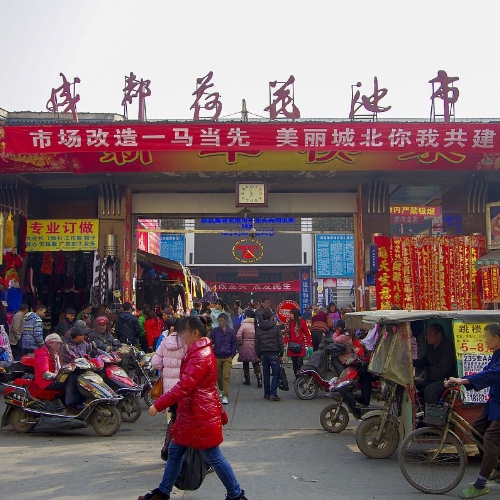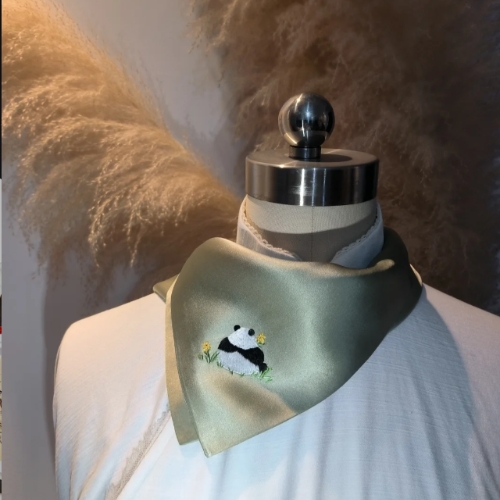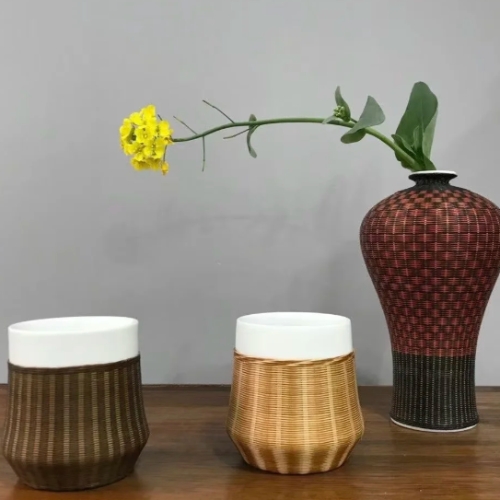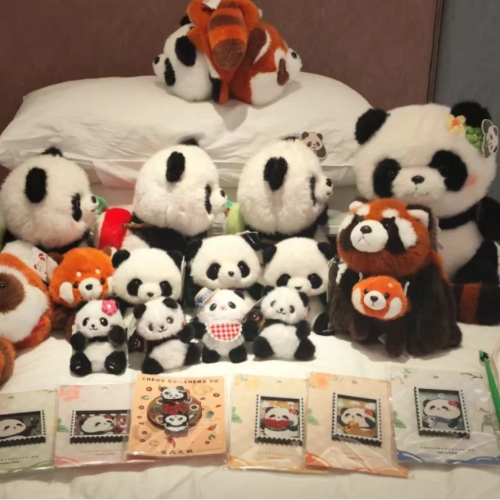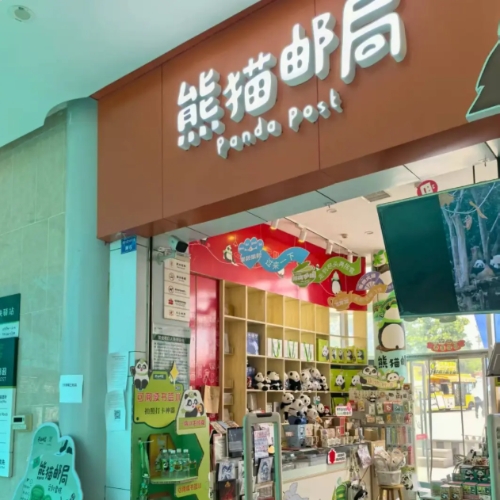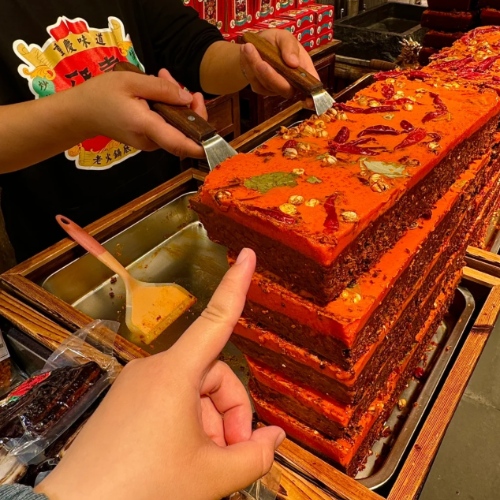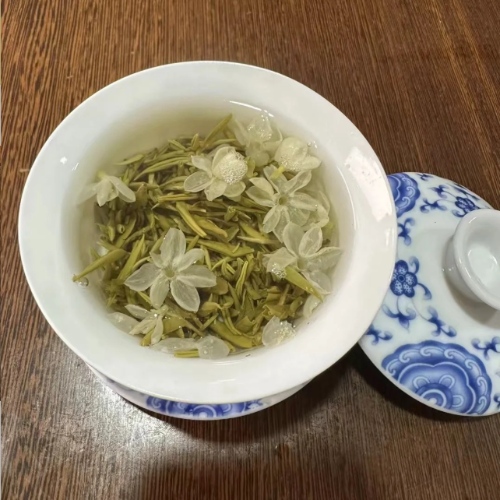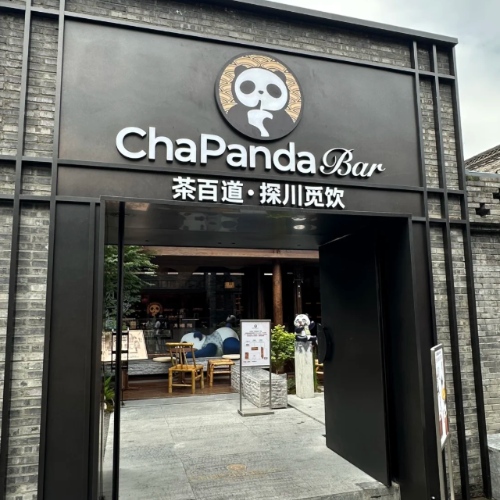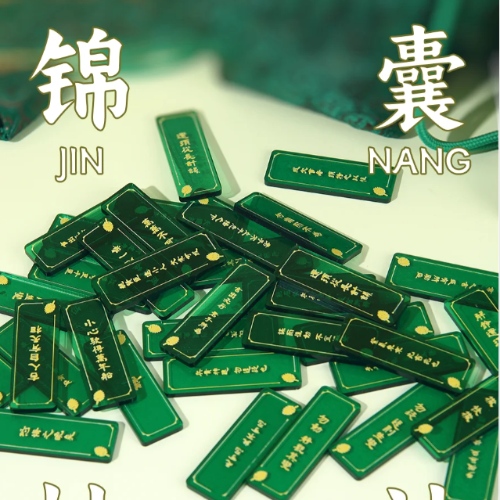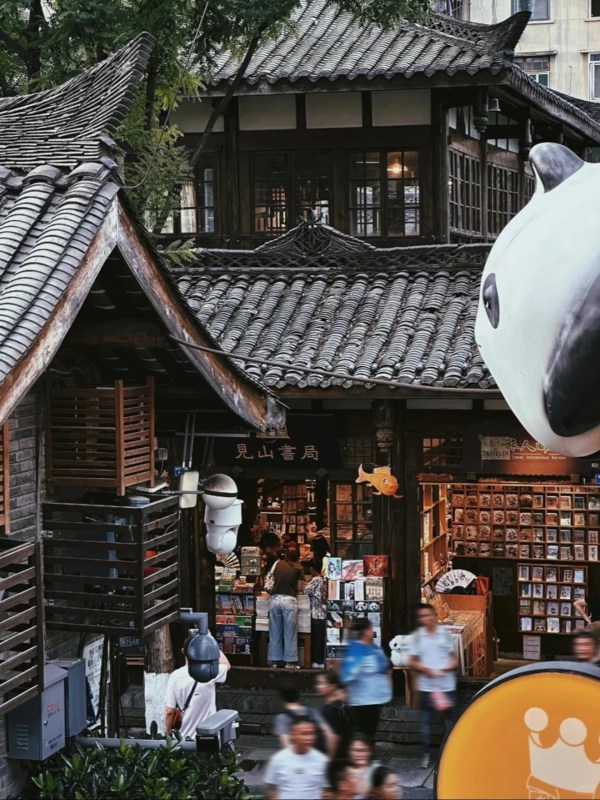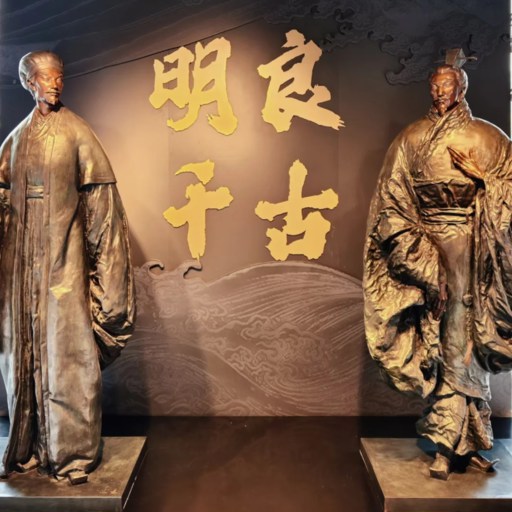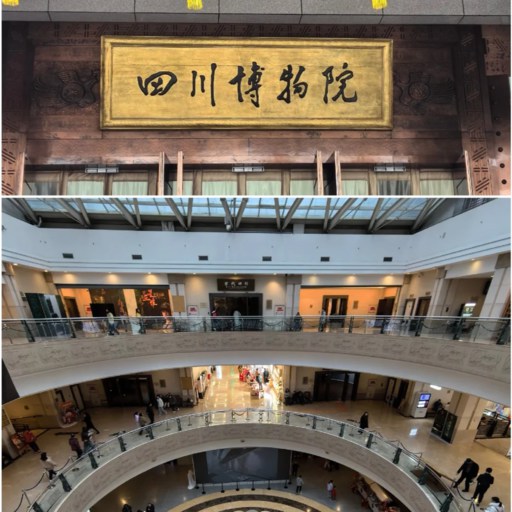China's shopping paradise CHENGDU There is always something to buy for every shopaholic in China. Whether you worship at the altar of budget local handicrafts, are obsessed with high-end international labels or just like to stay ahead of the fashion curve, this city’s got it all.
In this guide, we’re dishing on the best shopping in town. Jinli? It’s where you can flex your haggling muscles on classic jade jewelry. Chengdu IFS? This is your playground luxury brand lovers. And Kuanzhai Alley? That’s where you’ll discover the funkiest local designer pieces.
But wait, there's more! We will also tell you about the sw’s largest malls and those secret fashion treasures that only a local knows. Trust us, these shopping spots are chef’s kiss perfection, and we’ve got the inside scoop you need. So what are you waiting for? Explore Chengdu's retail scene and shop like a local!
Walk, Wander, and Splurge — Chengdu’s Iconic Shopping Streets You Can’t Miss
Chunxi Road – Chengdu’s Heart of Fashion and Flavor
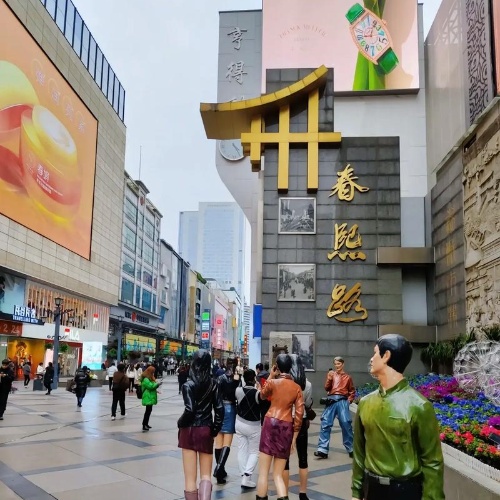
Chunxi Road
If you ask any local what the most famous street in Chengdu is, the answer is almost always Chunxi Road. Crowded, noisy, but full of personality, it’s where bubble tea shops, giant billboards, and boutique stores collide. The IFS panda sculpture crouches above like it’s watching over shoppers, while downstairs, small stores display trendy handbags and panda dolls. Some people say things cost more here than in other cities, but that really depends — you can find Sanfu Fashion pieces for ¥80–150, while designer brands in Wangfujing Department Store can cost ten times that. This mix of brands and local shops defines shopping in Chengdu as both casual and exciting.
Evenings are when Chunxi Road feels most alive. The air carries the spicy scent of peppercorn skewers, and mellow music spills from cafés. Neon signs flicker against wet asphalt, turning the street into a moving mirror. I once watched a group of students take turns posing by puddle reflections — their laughter blended with the hiss of rain and the beat of pop songs. It looked like a movie scene, the kind that stays in your head long after you leave.
Everywhere you turn, there’s a reminder that Chengdu’s fashion isn’t about price tags but about attitude — easy, confident, and slightly playful. Whether you’re hunting deals, people-watching, or just sipping milk tea under neon lights, Chunxi Road makes shopping in Chengdu feel personal and real.
Taikoo Li – Between Daci Temple and Luxury Brands
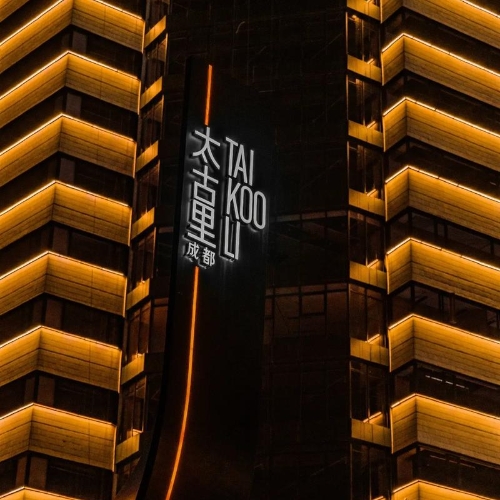
Taikoo Li
For shoppers who prefer calm to chaos, Taikoo Li is paradise. Just steps from Chunxi Road, this open-air complex fuses glass façades with the curved eaves of Daci Temple, blending tradition and luxury in a single breath. Gucci, Chanel, and Muji stand beside teahouses where monks occasionally pause, and you might catch the faint sound of a bell through café chatter. Order a ¥40 matcha latte, watch the steam rise, and it feels like the city suddenly exhales. Visitors often say this spot reflects refined shopping in Chengdu, where style meets serenity.
Beyond the shopping, Taikoo Li hides its own surprises. The Montblanc global concept flagship anchors the area, designed with a theme of paper and featuring Chinese artist Chen Xin’s “Future Landscape: Journey of Nine Heavens,” inspired by Li Bai’s poetry on Chengdu. Nearby, the Fangsuo Commune Bookstore shelters locals reading quietly beneath ginkgo trees, and when night falls, the amber lights turn narrow lanes into something between Chengdu and Kyoto — still, glowing, and impossibly photogenic. It’s not the cheapest mall in town, but it’s where elegance meets ease, and where shopping feels less like consumption and more like conversation.
Jinli & Kuanzhai Alley – Where Handcrafts Tell Stories
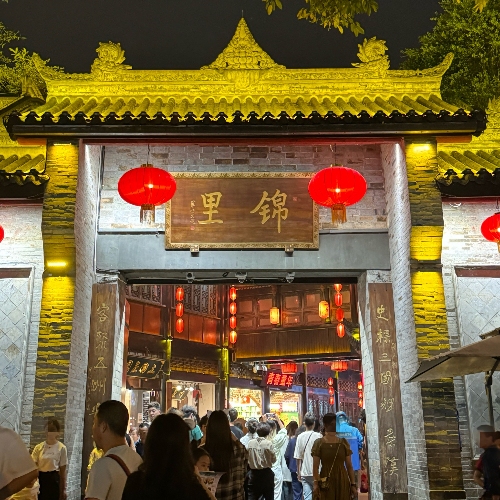
Jinli Alley
When the neon fades, head west to Jinli and Kuanzhai Alley. The atmosphere changes instantly — brick alleys, dim lanterns, and a faint mix of sandalwood and sugar. At Jinli Shu Embroidery Pavilion, you can watch an old craftsman stitch panda motifs onto silk handkerchiefs for about 120 RMB, while explaining the art of "Three Stitches and Nine Satin Patterns". Just around the corner, the Cha Baidao & Tan Chuan Mi Yin Flagship in Kuanzhai Alley feels like a courtyard museum — milk tea made by hand on the first floor, a terrace upstairs for lazy afternoons, and after six, it shifts into a mellow light-and-shadow bar. Their jasmine "Snowfall" drink and co-branded magnets have become Chengdu’s new souvenirs.
Across the lane, the Chengdu Gifts Experience Store stocks over 500 local crafts — from the Jinsha Sunbird Bookmark (68 RMB) to the Panda Gaiwan Tea Set (198 RMB). You can even scan a QR code to play the Three Kingdoms Check-in Game for bonus gifts. Near the entrance of Jinli, an auntie paints sugar dragons on marble; the air smells of caramel and peppercorn. When my candy dragon broke, she just smiled and made another one for free. People often say these alleys are the soul of Chengdu. Here, buying something feels like keeping a piece of the city’s warmth and creativity. This is where shopping in Chengdu turns into a personal memory.
Chengdu’s markets are great, but wait till you see Guangzhou—check Shopping in Guangzhou: From Luxury Malls to Lively Street Markets.
Hunt, Haggle, and Discover — Dive into Chengdu’s Markets and Hidden Corners
Songxianqiao Art City – The Antique Maze for Collectors
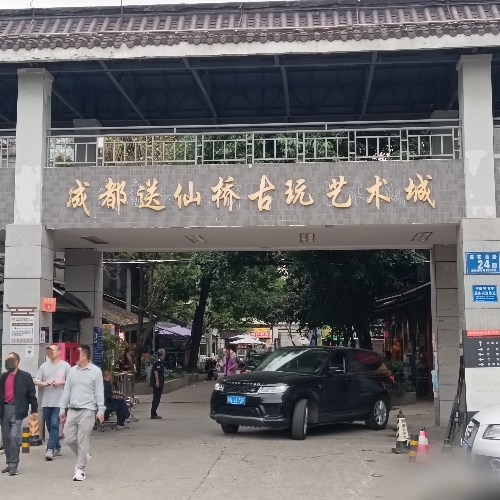
Songxianqiao Art City
If you want to taste the thrill of a real-life "Taobao" hunt, Songxianqiao is the place. Built in 1998, it remains the largest antique market in western China, its corridors lined with elegant shop signs: Jin Miao Pavilion for jade, Mingjing Xuan for porcelain, and Ziyu Jinsha for purple clay teapots. Every shelf seems to whisper old stories, though locals will tell you seven out of ten pieces are reproductions. Still, bargaining here is a kind of theater — I once saw a visitor knock down a jade bangle from ¥1,200 to ¥400, both laughing like old friends. Moments like these make shopping in Chengdu feel hands-on and interactive.
Upstairs, the second-floor studios welcome anyone curious about Chinese calligraphy and ink painting. Some artists even invite you to try a brushstroke. The sound of mahjong tiles drifts from nearby corners, blending with the warm aroma of soy milk from breakfast stalls outside. Bring small cash for outdoor vendors — you might find a Republican-era stamp (¥20–50) or an old abacus (¥80–150) that feels surprisingly weighty in your hands. The joy isn’t just in what you buy, but in the slow rhythm of discovery that makes Songxianqiao so unmistakably Chengdu.
Hehuachi Market – Chengdu’s Wholesale Jungle
When locals want unbeatable prices, they head straight to Hehuachi Market. It’s messy, loud, and strangely addictive — a wholesale district that feels more alive than any mall. Electric tricycles weave between narrow aisles, vendors shout over each other, and the smell of steamed buns drifts from street corners. The place is chaotic, but it hums with the energy of a city that never stops trading. This is raw, practical shopping in Chengdu, where people buy in bulk and negotiate with smiles.
In Zone 1 Clothing City, racks overflow with cotton shirts for ¥40 and jeans for ¥60. You’ll find trendy streetwear next to work uniforms, but remember to check the stitching — quality varies wildly. A few alleys away, in Zone 3 Small Commodities Hall, the shop Chopstick Family hides shelves of bamboo utensil sets priced between ¥5–20. The owner once poured me jasmine tea and said with a grin, “This market feeds half of Chengdu.” He wasn’t exaggerating.
Wear sneakers and travel light — the aisles are tight and busy, and backpacks can get caught between boxes of fabric and shoes. You probably won’t leave empty-handed though. Between the chatter, the bargains, and that faint scent of tea and cardboard, Hehuachi reminds you why shopping in Chengdu always feels like a small adventure.
Wuhou Tibetan Street – Where Faith Meets Commerce
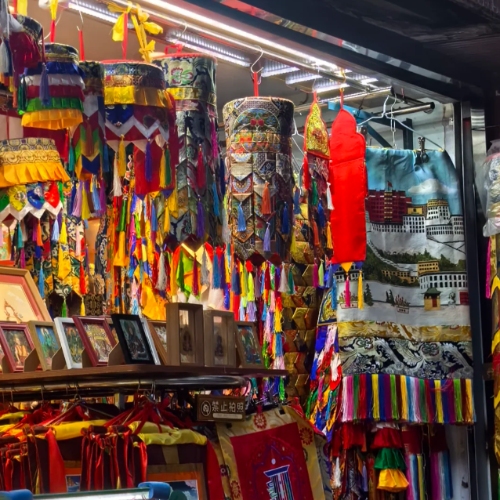
Wuhou Tibetan Street
Just a short walk from Wuhou Shrine, Tibetan Street unfolds like a splash of color — fluttering prayer flags, silver trinkets glinting under sunlight, and the faint hum of Buddhist chants from a nearby speaker. At Snowland Treasures, you’ll find silver bracelets etched with the Six-Word Mantra (¥150–300) and yak wool scarves that feel warm and rough to the touch. The air carries a mix of sandalwood smoke and butter tea, that rich scent that first surprises you but soon feels comforting.
Most shopkeepers are Tibetan and speak with gentle curiosity. They don’t rush you; instead, they share stories of mountains and family. One owner told me, “We sell memories, not things,” his hands polishing a bracelet that shimmered like ice. That sentence lingered longer than the purchase itself. Across the street, Malaya Tibetan Restaurant serves buttery tea and barley pancakes (¥10 per plate), their spice and fat blending into something uniquely peaceful. Sitting there, surrounded by soft chanting and clinking bracelets, you realize this street isn’t about buying — it’s about slowing down enough to listen.
Shopping’s just one story—discover Chengdu from new angles in 2025 Chengdu Travel Guide: Top Things to Do in Chengdu.
Shop Big, Chill Hard — Explore Chengdu’s Modern Malls Like a Local
Chengdu IFS – The Panda Climbing to Luxury
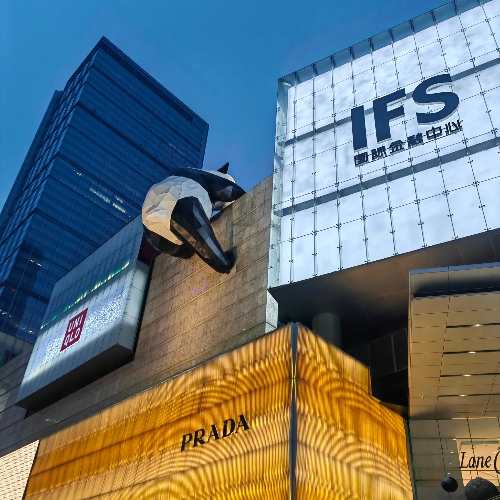
Chengdu IFS is where modern comfort meets bold design. The giant panda statue climbing the wall draws everyone’s camera. Inside, brands like Dior, Uniqlo, and Apple sit side by side. This mix of global and local flavor defines upscale shopping in Chengdu today.
The rooftop garden is free and quiet — a break from the crowd. Grab coffee at %Arabica for ¥45 or lunch at Haidilao for ¥250 per person. Whether you shop or just people-watch, the mall feels like the city’s living room.
Raffles City & Global Center – Mega Malls with Local Soul
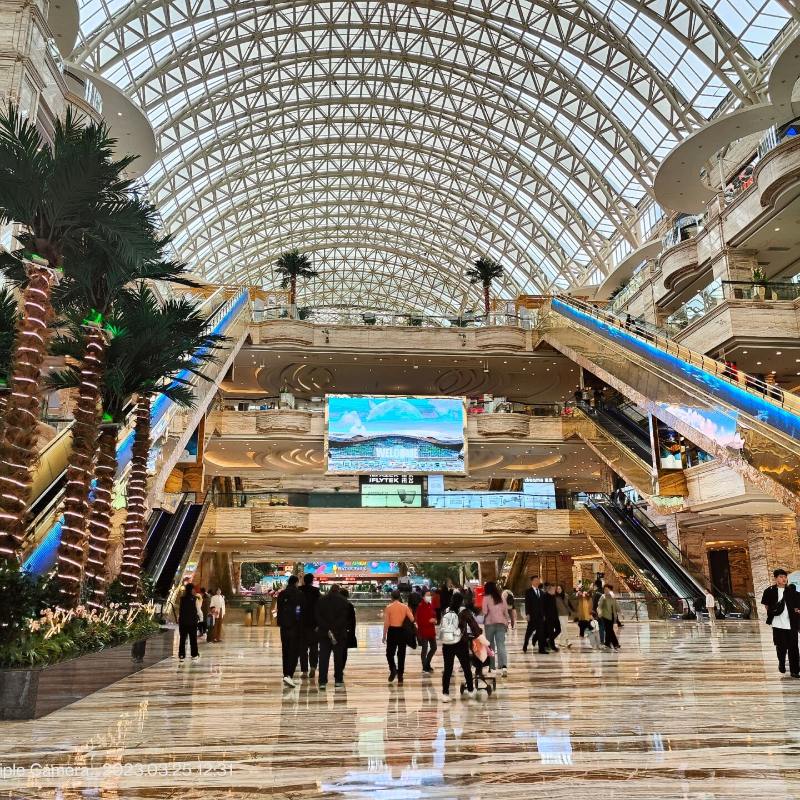
Chengdu Global Center
For a more everyday vibe, visit Raffles City or the Global Center. Both mix fun and function. You’ll see families, students, and tourists all under one roof. Raffles City offers casual brands and restaurants, while the Global Center packs an ice rink, hotel, and cinema in one place. It’s massive, but somehow still friendly.
Prices vary, but deals come often. Seasonal sales draw crowds who love practical shopping in Chengdu. Even on rainy days, these malls stay busy — proof that shopping here is part of local life.
Luxehills CPI – Art, Air, and Boutique Finds
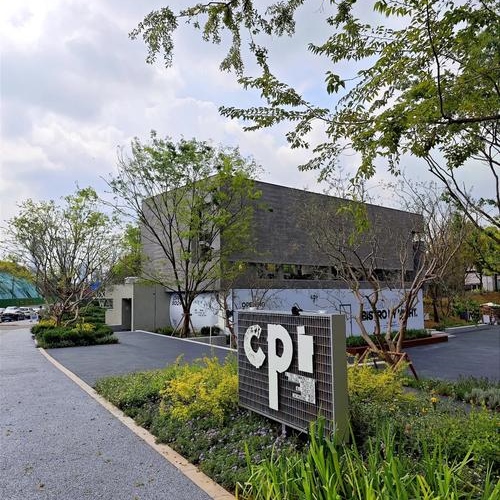
Luxehills CPI
Far from the city center, Luxehills CPI feels more like a quiet vacation village tucked between pine trees. The air smells faintly of resin and roasted coffee, and each boutique seems to hum with its own rhythm. At The Poetry of Useless Things, handmade candles (¥150–300) come in rough ceramic jars crafted by local potters, their scents inspired by Qingcheng Mountain tea and pine wood. Just across the lane, Gudaoya Studio displays linen dresses (¥300–900) cut by the designer herself — only two or three pieces per style, making each feel personal and fleeting.
Dogs are welcome here, so it’s common to see corgis trotting past minimalist storefronts while their owners sip oat lattes on wooden benches. Even the light seems to cooperate, filtering softly through tall trees onto stone paths. Every corner feels composed for a photo, yet the best moments are unplanned — a candle flame flickering in the breeze, a dog’s bell tinkling in the distance, a quiet reminder that shopping here is more about atmosphere than acquisition.
Now that you know where to shop in Chengdu, see how to plan it all in 3 Days in Chengdu: Your Ultimate Itinerary for an Unforgettable Trip.
Crafts, Flavors & Pandas — Chengdu’s Signature Things to Buy
Shu Embroidery & Bamboo Weaving – Art You Can Bring Home
- Shu Embroidery
- Bamboo Weaving
In Chengdu, tradition meets technology in the most unexpected ways. At Jingxiuyuan Shu Embroidery Workshop (Qintai Road), AI-generated designs now inspire delicate stitches. Their panda-patterned silk scarves (¥380) are bestsellers — staff gladly show visitors how a digital sketch evolves into a shimmering piece of embroidery. You can even touch the silk frame to feel how smooth and cool the threads are before they take shape. The gentle click of needles and the scent of tea from the nearby stall make it hard to leave.
A short ride away in Kuanzhai Alley, Zhuyixuan Bamboo Studio offers another side of craftsmanship. Their handwoven bamboo cup sleeves (¥120) are made from Cizhu — a kind of bamboo from Dujiangyan — and crafted through ten steps: scraping, splitting, drying, and polishing among them. The owner often tells curious guests, “Every thread of bamboo breathes,” and you can feel that truth in the lightness and texture of the finished piece. Standing there, with sunlight glinting off fine bamboo fibers, you realize these aren’t just souvenirs — they’re fragments of a living craft culture still thriving in Chengdu — exactly what makes shopping in Chengdu meaningful.
Panda Souvenirs & Chengdu Snacks – Gifts for Friends and Family
- Panda Souvenirs
- Panda Post Office
Those pandas are more than mascots in Chengdu — they’re part of everyday life and design. At the Chengdu TrueLove Panda Creative Store (IFS Basement 1), sleek panda sculptures blend art with function. The smallest version (¥88) doubles as a bookend, while larger ones serve as desk ornaments. Staff often let you test the weight and balance, explaining how each piece is cast and hand-polished. The store’s white-and-black minimalism contrasts perfectly with the playful vibe of the panda itself, and it’s easy to spend half an hour admiring details you didn’t expect.
A short walk away, the Panda Post Office (Taikoo Li Branch) adds a touch of nostalgia. Visitors line up to stamp postcards (¥5 each) with the iconic panda postmark that actually mails worldwide. The limited-edition stamp set (¥68) sells out fast, especially during weekends. Inside, walls are covered with notes sent from travelers around the world — tiny wishes, birthday messages, or just a quick “hello” from Chengdu. The faint smell of ink and paper, mixed with nearby jasmine tea, gives this little shop a warmth that feels almost old-fashioned in a digital world. These two stops show the friendly side of shopping in Chengdu — cute, warm, and full of charm.
Sichuan Flavors – The Taste of Chengdu
- Hot Pot Base
- Jasmine Tea
On Chunxi Road, the Xiaolongkan Hotpot Base Store welcomes you with the unmistakable scent of chili and beef tallow. The spicy broth packs come in two styles: beef tallow (¥35 per bag) and clear oil (¥30 per bag), both with English labels for foreign visitors. Staff often laugh as they share their tip — “Add bone broth for more aroma.” Just a few streets away, the Zilezhai Jasmine Tea Shop in Kuanzhai Alley fills the air with floral fragrance. Their nine-time-scented jasmine tea (¥120 per can) carries a lingering aroma and poetic packaging printed with Du Fu’s verses — the perfect mix of gift and memory.
These small shops make shopping in Chengdu feel like tasting its soul. At the tasting counter, visitors are invited to brew their own cup, watching the leaves unfurl in hot water. Between the tea’s fragrance, the heat of hotpot spices, and the buzz of voices, Chengdu feels like a living symphony of flavors. When you leave, you’re not just taking home souvenirs, but a memory that lingers on your tongue.
Cross-Cultural Creations – Where Tradition Meets Modernity
- Cha Baidao Co-Brand Flagship Store
- Collectible Cards from The Wisdom of Three Kingdom
Strolling through Kuanzhai Alley, you’ll spot the Cha Baidao Co-Brand Flagship Store, where playful creativity meets modern design. The double-layer glass cup nicknamed “Rooftop Escape” (¥68) and the city badge pin (¥35) glow warmly under amber lights. Each souvenir carries that distinct Chengdu humor — lighthearted, a bit quirky, and effortlessly charming. People sip tea, chat, and laugh under soft lights — casual shopping in Chengdu at its most human scale.
Meanwhile, at Wuhou Shrine’s “Chengdu Gifts” Store, collectible cards from The Wisdom of Three Kingdoms series are the newest craze. Collect ten cards, and you can exchange them for a Zhuge Liang Bookmark. Many travelers stop by just for the game, turning shopping into a treasure hunt. As one clerk laughed, “Sometimes people buy memories, not just cards.” In Chengdu, culture and commerce blend so naturally that every purchase feels like a story in itself.
Shop Smart, Stay Savvy — Insider Tips Every Chengdu Shopper Should Know
How to Bargain Without Offending Locals
Chengdu shoppers are friendly but practical. If you’re buying from street vendors, smile, offer half, and meet in the middle. Saying “太贵了 (too expensive)” with a grin usually helps. Don’t push too hard — humor goes further than haggling. In larger malls or brand stores, prices are fixed. Remember, bargaining over tea cups is fine; bargaining over jade jewelry inside a temple is not.
Payment, Refunds, and Digital Life
Digital payment rules the city. WeChat Pay and Alipay both work with foreign Visa or Mastercard cards now. Just register with your passport. For refunds, receipts above ¥500 at official tax-free stores qualify. Claim at Shuangliu Airport or Tianfu Square before you leave. Apps like Didi and Ctrip even show stores with refund options — super useful if you’re planning a full day of shopping.
When and Where to Shop in Chengdu
Avoid national holidays unless you love crowds. Weekday mornings or post-dinner strolls are best. Many shops stay open till 10 p.m., and night markets linger past midnight. Summer rain adds its own charm — puddles mirror neon lights, and the city smells faintly of jasmine and spice.
For outlet-style bargains, head to Florentia Village Chengdu, about 40 minutes from downtown. It’s where global luxury meets real discounts — some brands cut prices by 30–50%.
FAQs: Let’s Talk Shopping in Chengdu
Q: What is Chengdu famous for shopping?
Chengdu is best known for its local markets, creative boutiques, and panda-themed stores. You can find traditional crafts like Shu embroidery, bamboo tea cups, and Sichuan snacks in Jinli or Kuanzhai Alley. If you’re into street-style shopping in Chengdu, Chunxi Road and Taikoo Li are the go-to spots.
Q: What are the best things to buy in Chengdu?
Tea, panda souvenirs, hotpot bases, and handmade embroidery are top picks. Many travelers also buy ceramics and jewelry from Songxianqiao Market. According to visitor reviews, these items best represent Chengdu’s shopping culture.
Q: Is Chengdu expensive for tourists?
Not really. Compared with Shanghai or Beijing, Chengdu offers better prices and more value. You can find great food and quality products at local markets. Even at shopping malls, prices remain reasonable for most travelers.
Q: Where is the most famous street for shopping in Chengdu?
Chunxi Road is the most famous. It’s packed with clothing stores, tea shops, and international brands. For a more cultural side of shopping in Chengdu, head to Kuanzhai Alley — it mixes local crafts with trendy cafés.
Q: Where can I find cheap clothes in Chengdu?
Check out Hehuachi Market for wholesale prices. Shirts cost about ¥40, jeans around ¥60. Bargaining is common there, and the variety is huge. It’s a top choice for budget-friendly shopping in Chengdu.
Q: Are there good outlets or malls in Chengdu?
Yes, IFS and Taikoo Li are the most popular upscale malls. For outlet-style shopping, Chengdu Outlets in Shuangliu District offers big discounts on international brands. It’s a mix of luxury and local convenience.
Q: What makes Chengdu unique compared to other Chinese cities?
Chengdu combines tradition and leisure. You’ll find Buddhist crafts beside modern cafés, and antique stalls next to fashion boutiques. This blend makes Chengdu shopping both relaxing and culturally rich.
Q: Are there any special tips for first-time shoppers in Chengdu?
Bring small cash for markets, but most places accept WeChat Pay or Alipay. Check product quality before buying, especially in open markets. Don’t rush — shopping in Chengdu is about taking it slow and enjoying local life.
